
If you could have experienced a stroke that has affected hand function, these therapeutic hand exercises might help improve hand mobility, strength and motor skills. You’ll maximize the advantages of those hand exercises for stroke patients with consistency and high repetition. Massive day by day practice is one of the best strategy to improve hand function and recovery from a stroke.
The next hand percussion exercises are arranged from easiest (level 1) to most difficult (level 3). Stroke survivors who’ve more hand weakness or paralysis may start with Level 1. Others may proceed to make use of Level 1 as a warm-up and progress to more complex stroke hand exercises.
Use the links below to go on to any section:
The importance of hand exercises after a stroke
Consider how often you utilize your hands on a day by day basis. They’re essential for just about all activities of day by day living and self-care skills, corresponding to bathing, grooming, eating and dressing. Due to how much we depend on our hands, losing a few of these functions after a neurological injury corresponding to a stroke could be devastating.
Depending on the severity and site of the stroke, survivors’ symptoms can vary greatly. For instance, strokes of the center cerebral artery within the brain cause weakness primarily within the upper limb, while strokes of the anterior cerebral artery normally affect the lower limb more.
A stroke of the brainstem or cerebellum may affect coordination and motor control on the identical or each side of the body. This happens because blood vessels supply specific areas of the brain which can be answerable for different functions or parts of the body. This makes each stroke unique, although they could have similar symptoms. A physical and occupational therapist who makes a speciality of neurological conditions might help stroke survivors develop an individualized rehabilitation program tailored to your needs.
Video: Hand exercises for stroke patients using OTA Barbara
Barbara is an occupational therapy assistant with experience in helping stroke survivors regain hand function. She has collaborated with Flint Rehab to offer useful hand exercises you possibly can do at home.
Watch her video showing various therapeutic hand exercises for stroke patients:
Whenever you practice arm exercises, the goal is high repetitions. This helps stimulate the brain and encourage neuroplasticity.
Neuroplasticity is the method the brain uses to rework itself and recuperate from trauma. Remember this: “nerves that work together come together,” which principally translates to “the more you utilize them, the higher you get at it!”
Usually repeating a movement, like these hand exercises, stimulates the brain to construct and strengthen the neural connections that help make it easier to maneuver around in the longer term.
The brain responds to stimulation, especially high repetition and specific stimulation. Whenever you repeat hand exercises day by day, it tells your brain that hand function is significant. In response, the brain strengthens the pathways that control hand function to make it more efficient.
Level 1: Gentle hand exercises for stroke patients
If you could have limited hand movement or hand paralysis, Level 1 hand percussion exercises are an ideal place to begin.
These exercises could be performed passively, using the nice hand to support the affected hand. Despite the fact that your healthy arm does more work, stimulation through passive exercises mobilizing the affected hand still helps activate neuroplasticity.
During passive exercises, it is amazingly necessary to place effort into the affected arm to perform the movement; Even in case you’re not capable of achieve significant muscle activation, research shows that mental practice, and even just interested by movement, can even stimulate neuroplasticity.
Listed here are some gentle hand exercises for stroke patients that you would be able to do at home:
1. Palm up and down
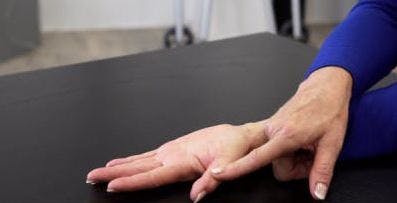
This movement, generally known as pronation (palm down) and supination (palm up), is significant when dressing, carrying objects, and turning doorknobs. For this therapeutic hand exercise, place your hand palm down on a table. Then use your good hand to rotate your palm up. Repeat: palm up, palm down, for a complete of 20 reps.
2. Flexion and extension of the wrist
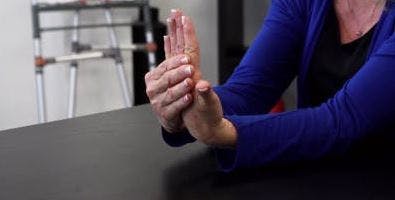
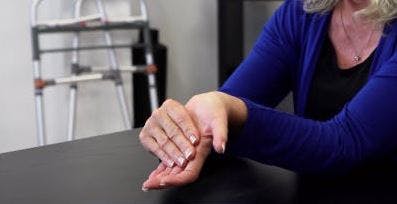
In the subsequent exercise, gently transfer the movement to your wrist. Along with your elbow on the table, place your unaffected arm in your palm relatively than your fingers to stretch the affected arm on the wrist. Stretch backwards, then forwards. Perform this movement slowly and at a painless level.
3. Lateral movement of the wrist
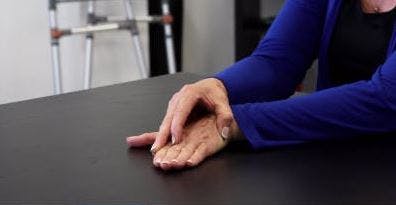
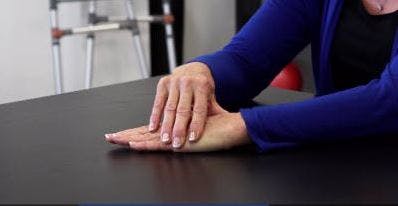
This side-to-side movement of the wrist known as ulnar deviation (toward the little finger) and radial deviation (toward the thumb). This just isn’t a standard movement performed in isolation, but is crucial for putting the wrist/hand in the proper position for various tasks corresponding to gripping, lifting and typing. That is the last level one hand exercise for stroke patients.
Place the affected hand on the table with the palm facing down. Then use your good hand to maneuver your arm left after which right. Repeat slowly 20 times on the edges, like a windshield wiper.
Level 2: Moderate hand exercises for stroke patients
The next hand exercises for stroke patients are suitable for individuals who have some hand mobility but should experience spasticity or weakness.
The important thing to successfully regaining hand movement is to perform impact hand exercises frequently. If vital, you possibly can still use your good hand to assist, but be sure you simply help enough to finish the movement.
Listed here are level 2 therapeutic hand exercises for stroke patients:
4. Rolling motion
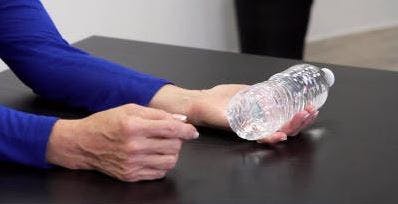
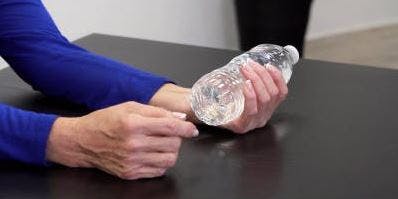
For this barely advanced hand exercise, place a water bottle in your affected hand. Keep your hand and fingers relaxed.
Curl your fingers as you grip the water bottle in your hand. Then slowly lower yourself back down. Repeat this movement, continuing to slowly open and shut your fingers across the bottle to offer your brain time to acknowledge and relearn the movement. Do 10 to fifteen repetitions.
This hand exercise is an ideal strategy to isolate and strengthen the wrist flexor muscles and fingertips to enhance your grip.
5. Wrist flexion
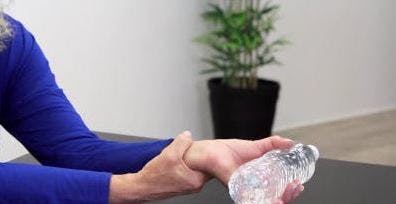
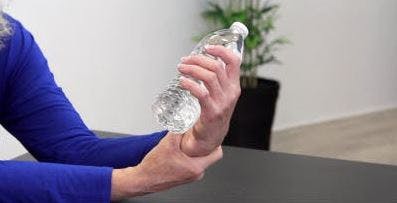
This hand exercise is comparable to a biceps curl, but targets the wrist and helps improve grip function. Hold a water bottle in your affected hand and support your arm together with your good hand.
Allow your wrist to stretch after which lift your wrist. Repeat slowly up and down for 10 to fifteen repetitions. It’s best to feel your forearm muscles working.
6. Grab and release
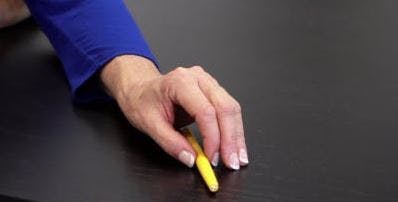
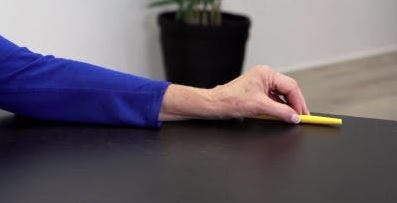
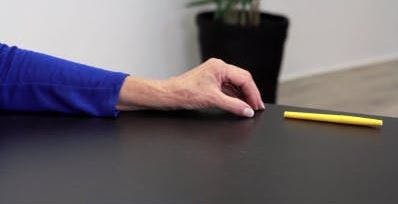
That is the ultimate Level 2 hand exercise for stroke patients and is great for developing higher motor control.
Place your pen on one side of the table. Grab it one of the best you possibly can affected fingers, especially between the thumb and index finger. Slide the pen across the table after which release it.
Think about holding the pen gently. To emphasise the therapeutic quality of this exercise, use the smallest amount of force vital to maneuver the pen.
Repeat this step by moving the pen forwards and backwards across the table while keeping your forearm on the table. This helps isolate the wrist and hand while stopping the shoulder from compensating to finish the movement (called synergistic movement).
Only do exercises which can be difficult, not frustrating. When you are unable to do that at first, use your unhurt hand or do some mental exercises and check out again in just a few weeks.
Level 3: Difficult hand exercises for stroke patients
The next hand exercises for stroke patients are intended for individuals with normal hand movement and dexterity, but whose goal is to further improve motor control.
7. Pen rotation
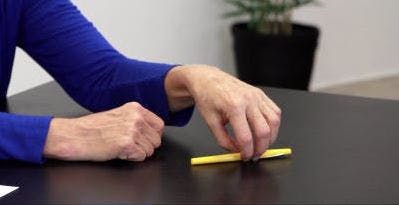
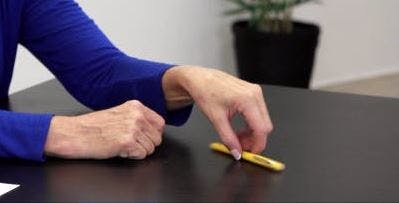
For this advanced hand exercise, place a pen on a table and rotate it together with your thumb and fingers. Stabilize your elbow on the table to forestall using your shoulder during this movement. Concentrate on isolating your thumb, index and middle fingers.
Challenge your speed during this exercise. Rotate the pen rapidly for 15 seconds, then try rotating it in the wrong way.
8. Dropping coins
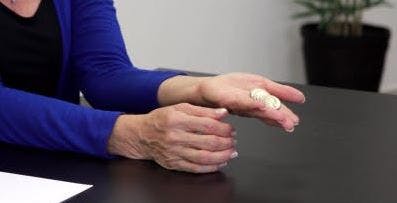


This advanced hand exercise consists of three movements. Start by placing 8 quarters in a row on the palm of your affected hand. Along with your thumb, move one quarter to grip together with your index finger and thumb.
Then place the quarter on the table while holding the remaining quarters in your hand using your remaining fingers. It’s called in hand manipulation and translation skills. It is a complex hand exercise since it requires coordination of all 5 fingers.
Once you could have them down one after the other, reverse the exercise and lift them back up. You may increase the challenge and make it a cognitive exercise by utilizing coins of various sizes (e.g. nickels, dimes, quarters) and adding up their amounts by placing them on the table in random order.
9. Pouring a cup of water
This hand percussion exercise works readily available and wrist control in a functional way. Take two cups (use plastic as a substitute of glass to be protected) and one crammed with water. Holding the cup in each hands, slowly pour the water from one cup to the opposite without spilling it.
By pouring alternating hands, you’ll work on coordination while pouring and stabilization when holding and receiving water. You may mix it up and work on different grips by utilizing regular cups of various sizes or cups/jugs with handles.
10. Finger opposition


On this final hand exercise for stroke patients, try touching each fingertip together with your thumb. Squeeze and release, starting with the index finger, moving to the center finger, then the ring finger, and eventually the little finger. Between each finger tap, fully straighten and stretch your fingers, also working the extensor muscles.
This is identical movement as MusicGlove hand therapy, which is a rehabilitation tool that helps you practice and achieve high repetitions while playing music. It’s an ideal strategy to do your personal rehabilitation at home, and it’s clinically proven to assist improve hand function in stroke patients in only 2 weeks.
First steps with hand exercises for people after stroke
By performing these hand exercises for stroke patients day by day, you’ll have the opportunity to enhance the mobility and performance of your hands. Try to not get discouraged if recovery is slow, as improving hand mobility takes time and consistency.